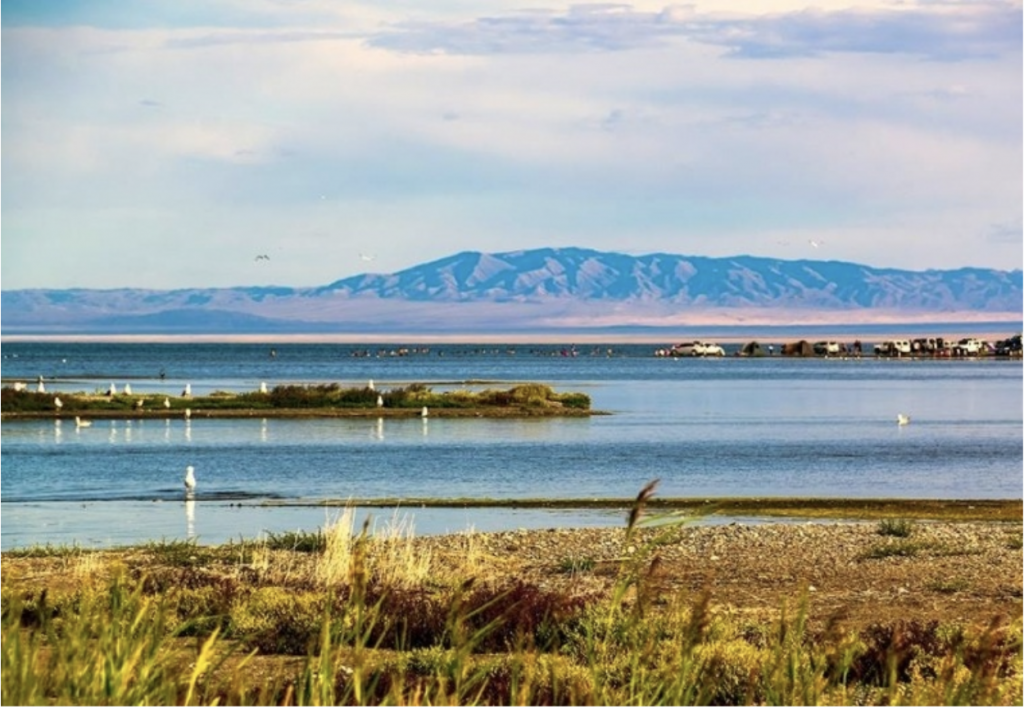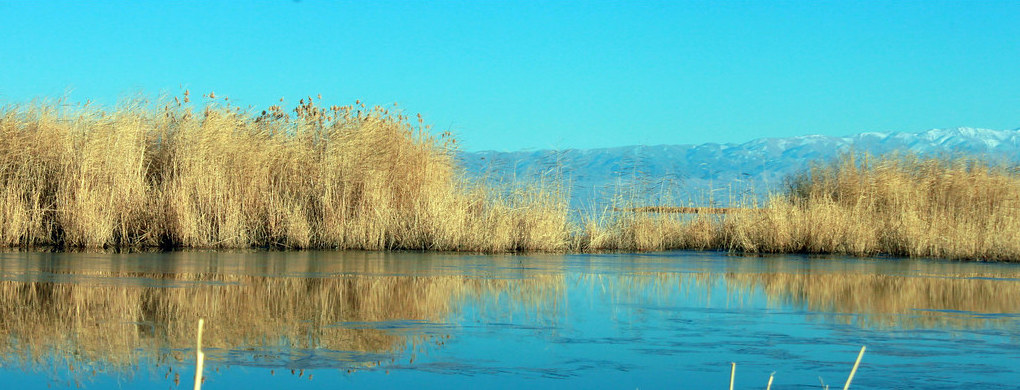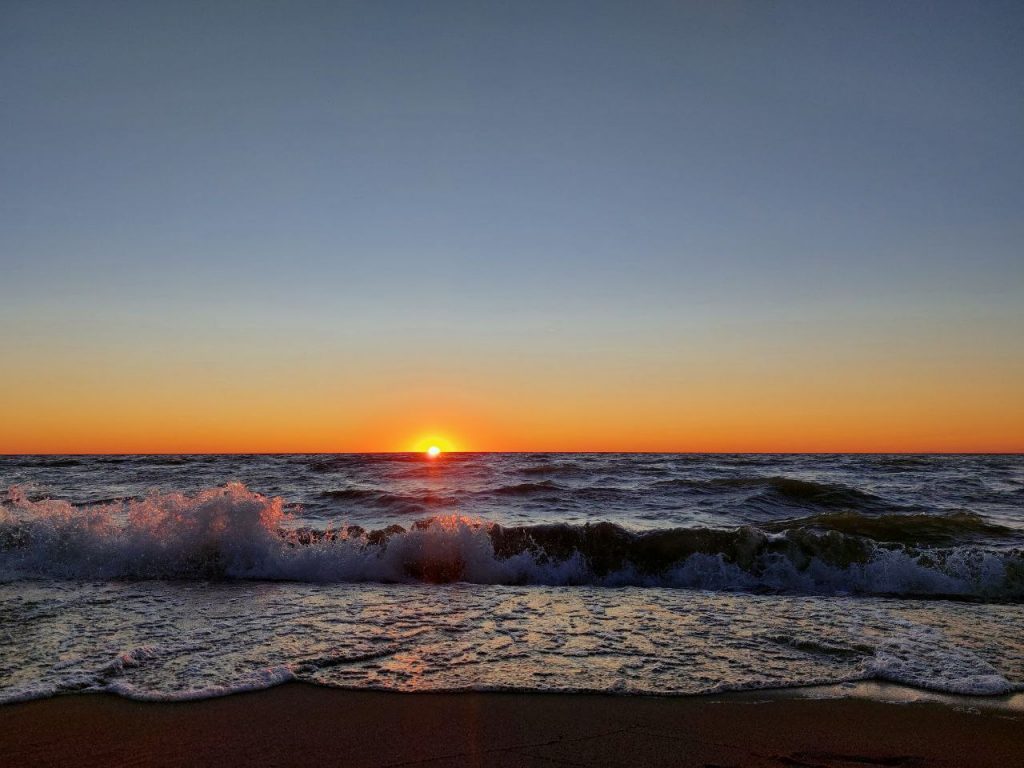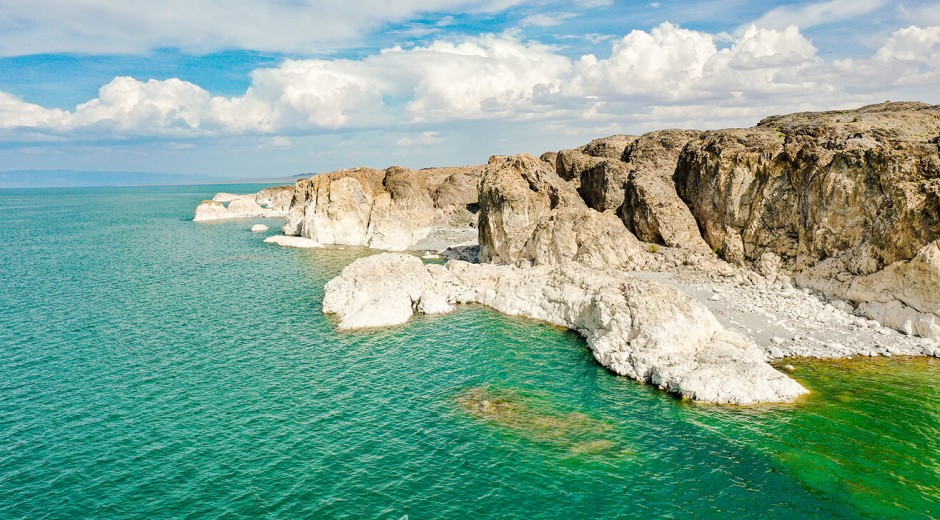Uvs Lake
The Uvs Lake is the largest lake in Mongolia, located in the northeastern part of Uvs Province, which is a vast and beautiful area, at the northern edge of the Great Mountains Depression. The northern tip of Lake Uvs is the remains of a huge salt sea that existed thousands of years ago, located in the Tuva Republic of Russia. More or less 38 rivers flow into the lake, including Tes, Naryn, Turgen, Kharhiraa, Sagil, and Borshoo Handgait. The Uvs Lake Sanctuary is located 36 kilometers from Ulaangom. The Uvs Lake is the largest lake in Mongolia with an area of 3350 hectares, 84 km in length, and 79 kilometers in width. The depth is 12-15 meters, in some places, it reaches 29 meters. It is 450 km long along the coast. Scientists have determined that it is 200 million years old. The Uvs Lake has a concentration of 18.7 grams of salt in 1 liter of water, which consists of sulfate and sodium ions. The shores of the lake are rich in salt, reeds, reeds, bushes, shrubs, willows, and poplars, so it is suitable for livestock grazing. The Uvs Lake freezes for 10 to 5 months, and the surface temperature in summer is 25 degrees and the bottom temperature is 19 degrees. The Uvs lake geese, brown geese, yellow spotted ducks, red-necked and tailed divers, etc. 362 species of migratory birds come in the warm season. There are 72 species of mammals and 29 species of fish in the lake, of which the goldfish can be caught and eaten.

Khuvsgul Lake
Khuvsgul Lake is the second-largest lake in Mongolia. In terms of depth, Khuvsgul Lake is not only the first in Mongolia, but also the highest in Asia. Contains about one percent of the world’s fresh water resources. It is the freshest water lake in Mongolia. Baikal Lake is considered to be a sister lake because of its umbilical connection. At its deepest point, it is 262 meters deep, and it alone provides about 70% of Mongolia’s clean water. 46 streams flow into Khuvsgul Lake, but only the Egiin River takes its source and flows about a thousand kilometers to Baikal Lake. Khuvsgul Lake is approximately 7 million years old and is one of the 17 oldest lakes on our planet. There are 5 small and big islands inside, and the biggest one is called Wooden Navel. Khuvsgul Lake, which is the freshest in our country, is 23 meters clear in its central part, which is why it is called the Blue Pearl. From the Khuvsgul Lake, you can go to places such as the Khadul Khad, Boshloi Khad, Sea River, and Dayaan Caves.

Khar Us lake
The beautiful Khar Us Lake has an area of 1153 kilometers is 72 kilometers long and 26 kilometers wide, has an island in the middle and is a lake with bamboo and sedges on the southern edge. It is a freshwater lake located 1157 meters above sea level in the depression of the Great Mountains with rare animals. Although vast, it is shallow, with a maximum depth of 4.4 meters and an average depth of 2 meters. There are about 10 big and small islands in Khar Us Lake, the largest of which is Agshab, which has an area of 400 square kilometers, is about 30 kilometers long, and is 272 meters above the water level. It divides the Khar Us Lake into two parts: north and south. 54 species of mammals, 268 species of mammals, 455 species of grasses, 4 species of fish, 6 species of reptiles, and 131 species of insects live in the paradise of the earth. Also, about 70 percent of the water catchment area of Khar Us Lake belongs to the Khovd River basin.

Khyargas Lake
Surrounded by colorful stones, the lake is 1,407 square kilometers in length, 75 kilometers long, 31 kilometers wide, and 19 kilometers, the water table is 1028 meters above sea level. A permanent lake with no outflow, the lake bed is saturated with a large amount of evaporate brine. The Airag Lake, which will supply it with excess water, has an area of 143.3 square kilometers. The Airag Lake is separated from Khyargas Lake by a long hill 50-80 meters high.
Hetsuu Khad
230 kilometers southeast of the provincial center and 60 kilometers from Zavkhan Sum, there is a 20-meter high cliff 5-7 kilometers long underwater in the eastern part of Khyargas Lake, and it is called Hetsuo Khad. Some of the tops of those rocks stick out of the water and look like islands. That protruding peak is a haven for waterfowl, where they build their nests and lay their eggs.

Buir Lake
The area of the beautiful fresh lake Buir is 615 square kilometers. There are many lakes and ponds in the eastern region of Mongolia, but the largest of them is Lake Buir. The longest is 40 kilometers from northeast to southwest, the width is 21 kilometers, and the length of the coastline is 113 kilometers. The catchment area is 20,200 square kilometers. The average water depth is 6-10 meters, but it reaches 10-50 meters in the deepest part. Along the southern shore of the lake, 3-5 meter high sand embankments formed by tidal waves will continue, and small lakes will be formed between them, some of which will be connected to the main lake. Since the Khalkh River flows into the Mon Buir Lake and the Orshuun River takes its source, willows and cane grow densely along the shore. Buir Lake is a very freshwater lake. Elements such as hydro carbonate, sodium chloride, and calcium dominate in lake water. Buir Lake is very rich in fish, and fish farming is the main source of livelihood for local people. There are 36 species of fish and 49 species of floating algae in 6 families. There are fish such as white bream, pike, horse mackerel, amar sugas, red sailfish, white bream, crucian carp, and silver carp. Also, it is amazing that the “Leander 1778” crab lives only in this lake, which is registered only in the “Red Book”.


